 |
||||||||||||
|
A similar view is expressed in a study by the RAND Corporation:
The Nuclear Control Institute is dedicated to increasing public understanding of the global threat posed by civilian as well as military plutonium. We work to find ways to stop the spread and reverse the growth of nuclear arms. A common element to achieving both goals is to re-combine plutonium with the nuclear wastes from which it was separated, rather than use plutonium as fuel in reactors. We advocate immobilizing and disposing of all separated plutonium as waste rather than recycling it as reactor fuel.
It is not widely understood that there is actually far more plutonium in civilian than in military nuclear programs.
3 Ever since plutonium,
Of this amount, about 250 tons have been produced for weapons; all the rest, nearly six times as much, has been produced in civilian nuclear power reactors. With the end of the superpowers' nuclear arms race, the amount of military plutonium is expected to stay essentially constant and then decline as plutonium from retired warheads is disposed of. But the
A major difference between military and civilian plutonium is that most military plutonium has been chemically separated ("reprocessed") from the spent fuel of reactors for direct use in weapons, while most civilian plutonium still remains embedded in spent fuel. As long as plutonium remains in highly radioactive spent fuel, it is not immediately accessible for weapons. However, commercial reprocessing of spent fuel from civilian power reactors is now getting underway on a large scale. The impact of all this reprocessing is startling. In 1990, civilian plutonium in weapons-usable form was about half the amount found in military programs. But by the year 2000,
more separated weapons-usable plutonium had been produced in civilian than
By today about 300 tons of separated plutonium
have been produced in civilian nuclear power programs. Only about one-third of
this plutonium has been used as fuel in power reactors, leaving a surplus of
about 200 tons of separated weapons-usable plutonium in civilian hands. [See
chart: "Civilian Separated Plutonium by
Contributing to these risks is the inability of inspectors from the International Atomic Energy Agency (IAEA) to promptly detect losses of weapon-size quantities of plutonium from large processing facilities. The IAEA faces substantial uncertainties in accounting for plutonium because plutonium tends to stick to the surfaces of plant equipment and is difficult and hazardous to clean out for inventory purposes. There are also severe limitations to the agency's so-called surveillance and containment measures for detecting attempts by workers to sneak plutonium out of a plant. The vast amount of civilian plutonium separated from spent fuel still represents only about a fifth of all the The ostensible purpose for commercial reprocessing is to recover plutonium for "recycling" as fuel in power reactors. But any economic rationale for reprocessing spent fuel and recycling plutonium that may have existed 25 years ago has completely evaporated today. At that time, it was feared that world reserves of uranium could not keep pace with demand for reactor fuel, resulting in a shortage of the non-weapons-usable uranium fuel used in civilian power reactors. Today, there is a world glut in cheap uranium; plutonium-based "mixed-oxide" (MOX) fuel for power reactors is six to ten times more expensive than comparable uranium fuel. There are only five nations engaging in commercial reprocessing today--- Britain, France, India, Japan and Russia.
5 [See chart:
"Civilian Reprocessing Capacity by Nation."]
The European and Japanese plutonium programs are driven largely by inertial forces to protect jobs and the investments of powerful, state-owned reprocessing companies. Reprocessing also continues because these companies are able to hold electrical utility companies at home and abroad to long-term contracts for reprocessing of spent fuel and delivery of plutonium. Many utilities no longer need or want plutonium because it is expensive and controversial, but they face steep penalties if they cancel their reprocessing contracts. Germany has canceled its domestic reprocessing program and tried to cancel reprocessing contracts with the British and French reprocessing companies. Japan, however, is expanding its domestic reprocessing program and is the leading foreign customer of the British and French reprocessing companies. Japan now owns about 30 tons of civilian plutonium, more than any other non-nuclear-weapon state. By 2010, Japan could have about 100 tons of separated plutonium, about a quarter of the world total of civilian plutonium by that time, and an amount equivalent to the U.S. military stockpile. Japan defends its plutonium program as essential to its energy security. However, a study by the Nuclear Control Institute found that Japan could acquire a 50-year reserve of uranium fuel for all its reactors for less than half of what it is planning to spend on its plutonium program. (See Paul Leventhal and Steven Dolley, "A Japanese Strategic Uranium Reserve: A Safe and Economic Alternative to Plutonium," Science & Global Security, Princeton University, 1994, Volume 5, pp. 1-31. ) The nuclear-weapons option inherent in the Japanese plutonium program is causing uneasiness among Japan's neighbors. As early as 1976, a U.S. nuclear- weapon expert briefed Japanese and other non-U.S. nuclear officials that civilian, "reactor-grade" plutonium can be used in weapons and that the concept of its not being suitable for weapons is "fallacious." 6 IAEA Director General Hans Blix said in 1990 that "there is no debate on this matter" in the agency's safeguards department. 7 Yet, in 1993, Japan's former ambassador for non-proliferation, Ryukichi Imai, stated in an article, "[R]eactor-grade plutonium...is of a nature quite different from what goes into the making of weapons....Whatever the details of this plutonium, it is quite unfit to make a bomb." 8 This continues to be Japan's official position. Japanese assertions notwithstanding, a team of former U.S. weapon designers have found that even terrorists would be capable of making an effective, first-generation nuclear weapon if they could obtain enough reactor-grade plutonium or highly enriched uranium. [See Mark et.al., "Can Terrorists Build Nuclear Weapons?" (1987).] www.nci.org/k-m/makeab.htm The difficulty of safeguarding plutonium was illustrated at a pilot-scale plutonium fuel fabrication plant in Japan, where the IAEA required the operator to clean out the plant and produce nearly 70 kilograms of plutonium that was reported to be stuck in the processing equipment. It took two years to complete the process, and not all the plutonium was found.. Under such circumstances, the IAEA cannot fulfill its timeliness and detection goals which are designed to meet the safeguards requirement of the NPT, namely "...preventing diversion of nuclear energy from peaceful uses to nuclear weapons...." [For more details, see these NCI reports: Leventhal, "The IAEA's Inability to Detect Diversions of Bomb Quantities of Plutonium: IAEA Safeguards Shortcomings---A Critique" (1994), and Miller, "Are IAEA Safeguards on Plutonium Bulk-Handling Facilities Effective?" (1990).] Beyond the diseconomics and the proliferation and terrorism risks of plutonium, there are also severe safety and environmental hazards. Plutonium is fiendishly toxic. A speck of it the size of a pollen grain, if caught in the lungs after inhalation or in bone after ingestion, can cause cancer. A severe reactor accident with plutonium-based MOX fuel in one-third of the core will result in 100% more latent cancer fatalities than if the core was made up entirely of conventional uranium fuel. Such an accident with an all-MOX core would kill 300% more people than with an all-uranium core. (See NCI Scientific Director Edwin Lyman's "Public Health Risks of Substituting Mixed-Oxide Fuel for Uranium Fuel in Pressurized Water Reactors," Science and Global Security, Princeton University, 2000, Volume 9, pp. 1-47.) www.nci.org/pdf/lyman-mox-sgs.pdf The health and safety hazards of plutonium have raised international concerns over transports of plutonium and reprocessing wastes from Europe to Japan. In 1987, Japan had to cancel plans to transport its plutonium by air from Europe after failing to develop a
crash- worthy shipping cask. Efforts are underway to lower cask safety standards and permit air shipments of plutonium.
End Notes 1. "Management and Disposition of Excess Weapons Plutonium", U.S. National Academy of Sciences (1994), p.34. Back to document 2. "Limiting the Spread of Weapons-Usable Fissile Material", RAND Corporation (1993), P. xii. Back to document 3. Data in the charts that follow are adapted from David Albright, Frans Berkhout and William Walker, World Inventory of Plutonium and Highly Enriched Uranium (1997). Earlier projections can be found in a Nuclear Control Institute Special Report, David Albright, 4. A metric ton equals 1,000 kilograms or 2,200 pounds. 5. Reprocessing capacity is shown by weight of the spent fuel reprocessed annually (metric tons of heavy metal per
year-MTHM/yr). Plutonium constitutes about 1% of the 6. Selden, "Reactor Plutonium and Nuclear Explosives," 7. Letter to the Nuclear Control Institute (1990). Back to document 8. Plutonium, No. 3, October, 1993.
Back to document |
||||||||||||
 |
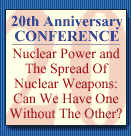 |
 |
 |
 |
 |
 |
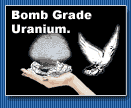 |
 |
 |
 |
 |
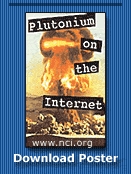 |
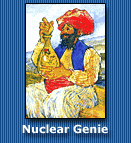 |
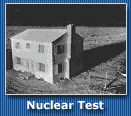 |




 Nation."
Nation."



